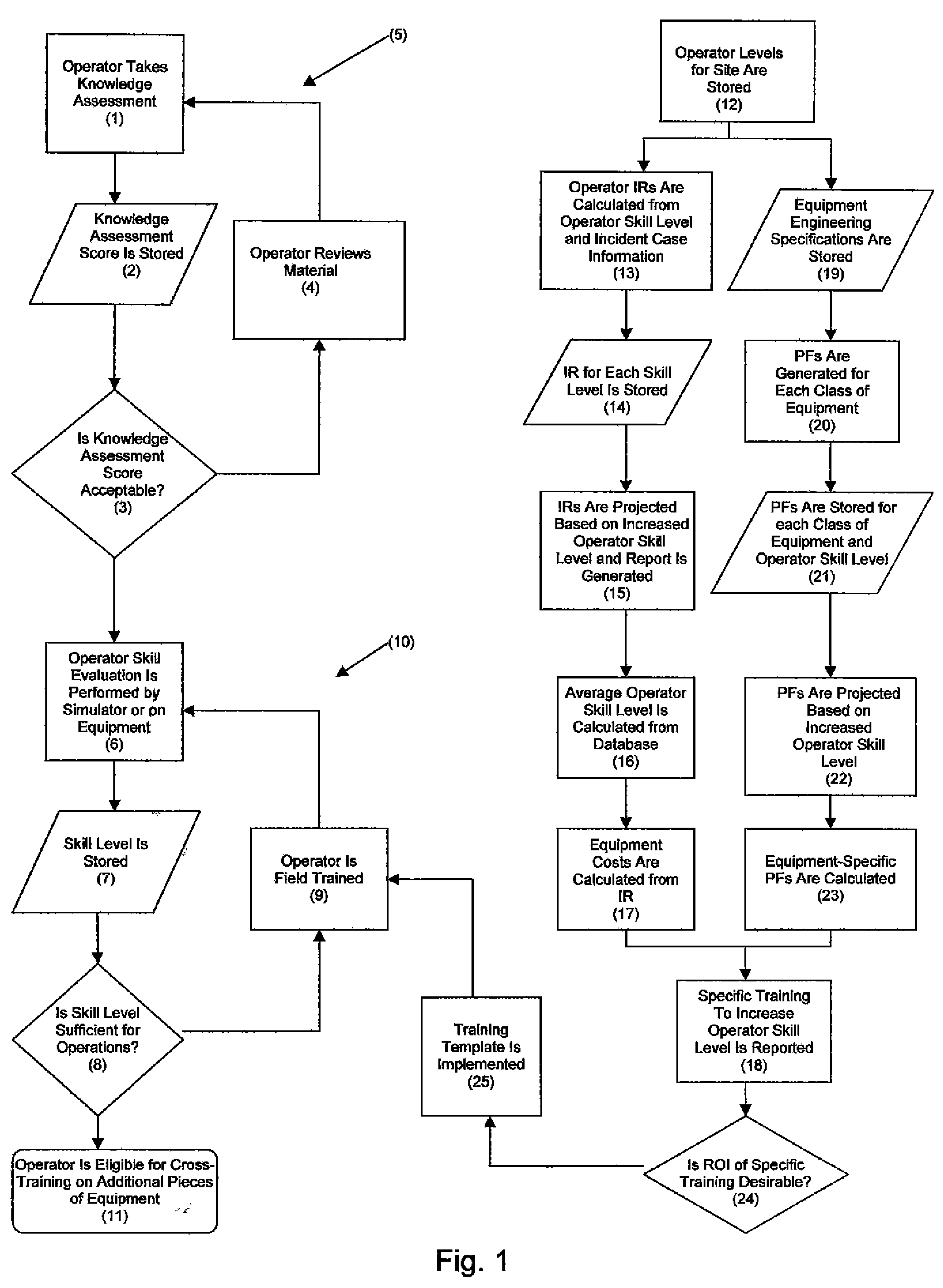Method for increasing productivity and safety in the mining and heavy construction industries
a technology for mining and construction, applied in the field of mining and heavy construction, can solve the problems of no mechanism by which managers can tie employee knowledge and skills directly to equipment costs and productivity rates, no way for managers to take that information and translate it directly into equipment, and aging of workforce, so as to achieve the effect of increasing productivity and safety and generating a productivity factor
- Summary
- Abstract
- Description
- Claims
- Application Information
AI Technical Summary
Benefits of technology
Problems solved by technology
Method used
Image
Examples
Embodiment Construction
[0020]A. Overview
[0021]FIG. 1 is a flow chart depicting the components or steps of the present invention. Initially, an operator takes an initial knowledge assessment 1. Next, the knowledge assessment score for that operator is stored in a database 2. At step 3, an evaluation is made as to whether the knowledge assessment score is acceptable. If not, then the operator reviews training material 4 that is focused on specific areas based on the results of his knowledge assessment. This loop 5 continues until the operator attains an acceptable knowledge assessment score.
[0022]Next, an operator skill evaluation is performed 6 by simulator and / or on specific equipment. The skill level for that operator is stored in a database 7. At step 8, an evaluation is made as to whether the operator's skill level is sufficient for operations. If not, then the operator undergoes field training 9 for specific equipment. This loop 10 continues until the operator attains an acceptable skill level.
[0023]H...
PUM
 Login to View More
Login to View More Abstract
Description
Claims
Application Information
 Login to View More
Login to View More - R&D
- Intellectual Property
- Life Sciences
- Materials
- Tech Scout
- Unparalleled Data Quality
- Higher Quality Content
- 60% Fewer Hallucinations
Browse by: Latest US Patents, China's latest patents, Technical Efficacy Thesaurus, Application Domain, Technology Topic, Popular Technical Reports.
© 2025 PatSnap. All rights reserved.Legal|Privacy policy|Modern Slavery Act Transparency Statement|Sitemap|About US| Contact US: help@patsnap.com



